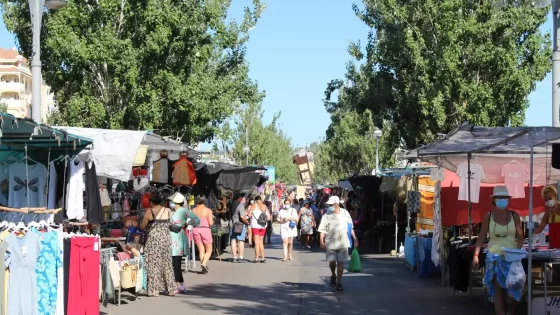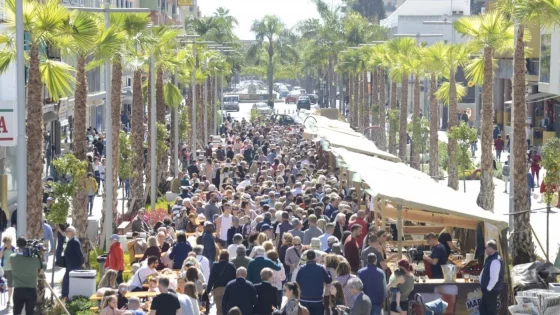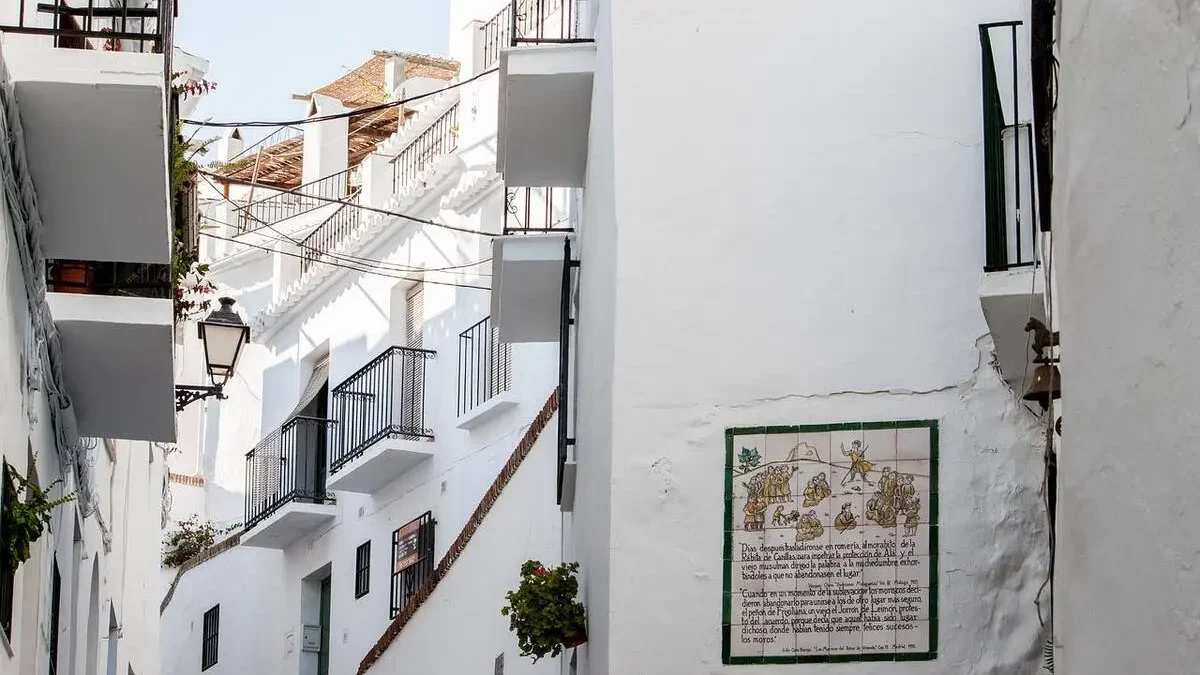
The white villages of Malaga and Cadiz are one of Andalusia’s most typical tourist elements, a reflection of its popular traditions and customs. These municipalities, generally located in inland areas, are characterised for their white façades whitewashed with quicklime and their steep, narrow streets which reflect the area’s Arab culture.
Although some of the most popular villages are located in Cadiz, such as Arcos de la Frontera, Setenil de las Bodegas or Ubrique, the province of Malaga is home to many stunning villages with immense history and culture, with secret corners that amaze their visitors each day and a popular and delicious gastronomy.
Taking a tour through Malaga’s white villages is becoming increasingly popular among tourists, since they are generally small and can be visited in just a few hours, meaning you can visit several in one day. To do so, the best option is to hire a car in Malaga airport and be able to travel around freely during your whole stay through Andalusia’s villages.
Table of Contents
Malaga’s white villages in the Serranía de Ronda region
Serranía de Ronda is one of the richest inland areas in terms of cultural heritage and natural spaces. It is situated to the west of Malaga, bordering Cadiz, and within it you can find some of Malaga’s best-known white villages.
Ronda
Talking about Malaga’s white villages is talking about the town of the Tajo gorge. Ronda has grown to become one of the most popular towns of the area and of Andalusia in general, standing out as one of the most attractive white towns of Spain.
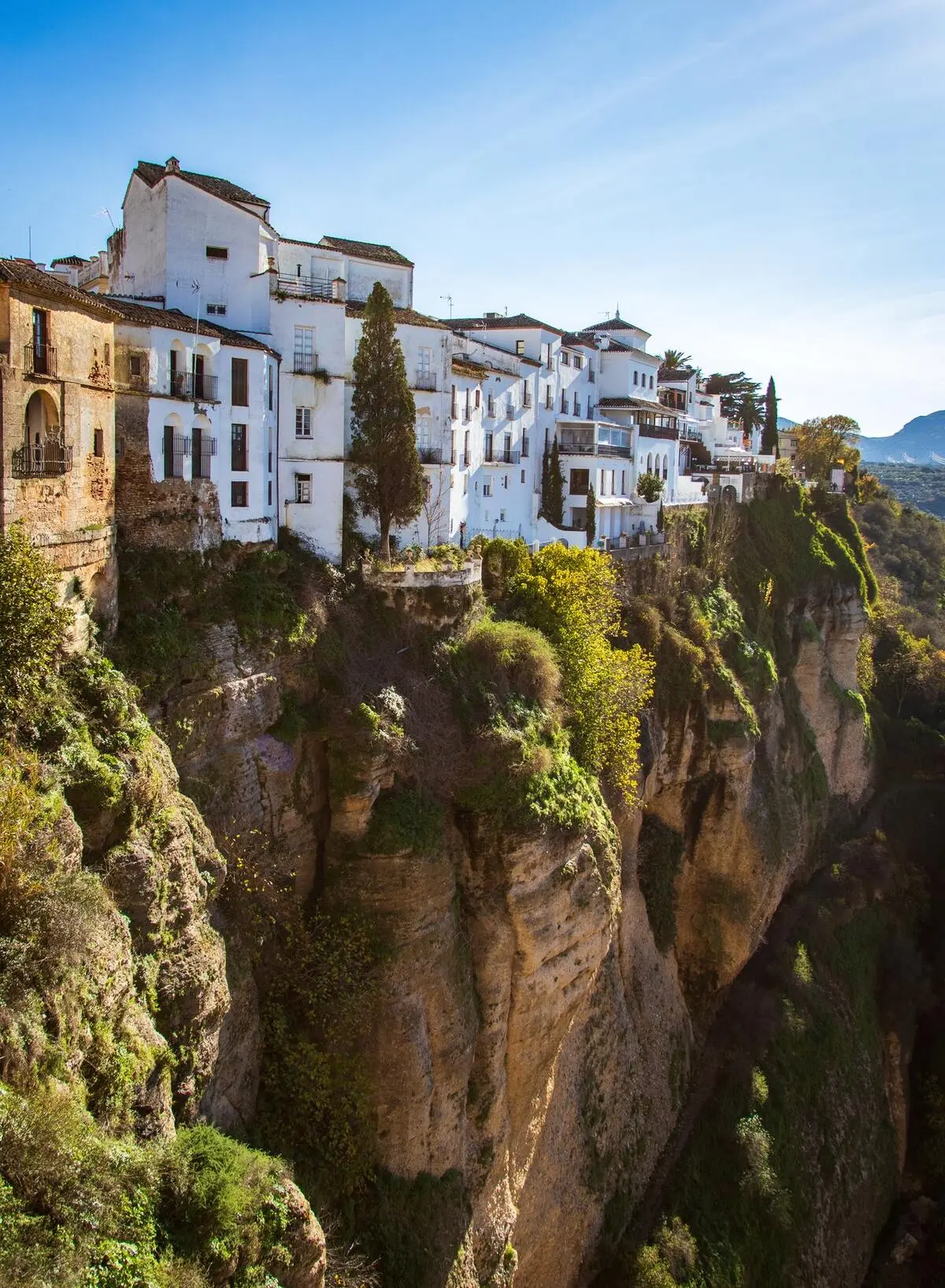
Its uniqueness consists of a natural element, since this white town is situated on a plateau divided into two by a gorge which is 100 metres high. Both sides are linked via the Puente Nuevo bridge.
In addition to this feature, Ronda boasts one of Andalusia’s most stunning bull rings, as well as several museums and some of the best-preserved Arab baths in Spain. Another huge attraction are the excellent restaurants in Ronda and the characteristic celebrations such as the infamous Romantic Ronda festival (Ronda Romántica), which takes place in spring and recreates the era of the bandits of Serranía de Ronda.
Cortes de la Frontera
Nestled in the Sierra de Grazalema Natural Park, Cortes de la Frontera is a village of Phoenician origin which borders the province of Cadiz. It combines a rich natural environment, which includes the largest cork oak forest in Spain, with a cultural and multicultural historic heritage. Romans, Greeks, Muslims and Visigoths have all passed through these lands, leaving a notable mark on the town.
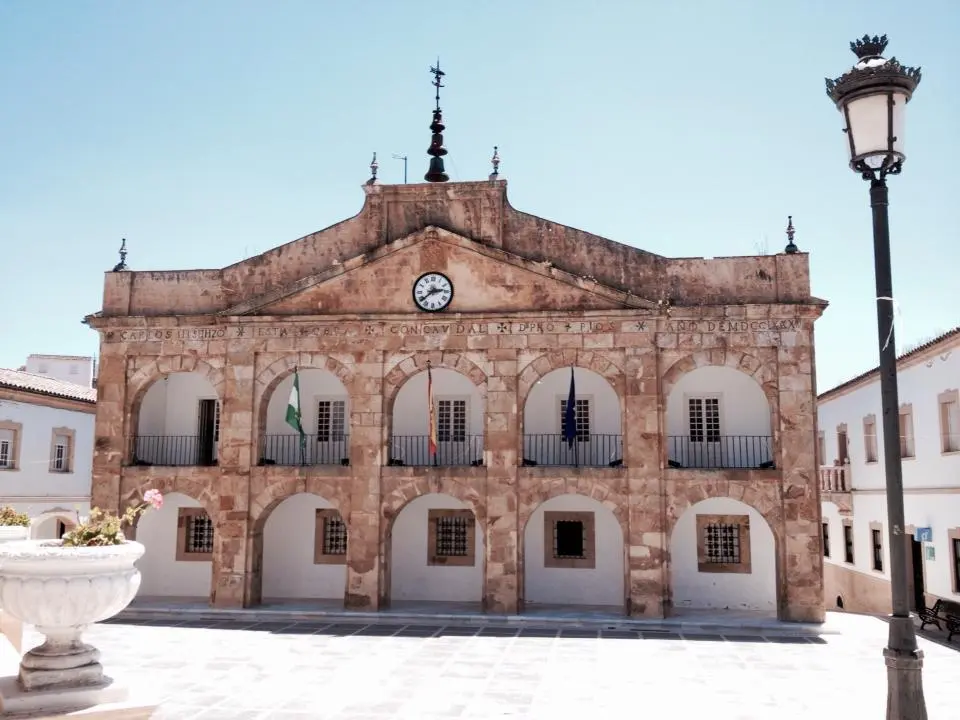
Its notable monuments include the bull ring (plaza de toros) and some picturesque houses, such as Casa de las Tetitas, literally meaning ‘house of the small breasts’ and so-called because of the shape of the rivets on its main door, the Town Hall or Casa Consistorial and Casa de Piedra which is literally a stone house. The latter has an interesting history since this house was used by the Christians as an undercover temple during the Islamic reign.
Gaucín
Known as the ‘Balcony of the Serranía’, Gaucín is a village of Roman origin with notable traces of the Arab reign. Its most characteristic feature is the ancient Aguila Castle (Castillo del Águila), strategically located on a hill at the top of the village and which was once a strategic point from which to defend the area. Guzmán the Good died in this fortress fighting against the Muslims.
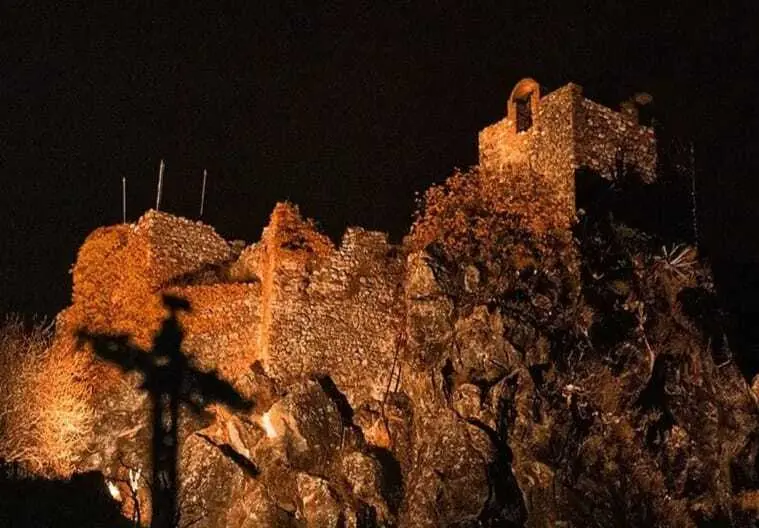
Also worth seeing are Fountain of the Six Spouts (Fuente de los Seis Caños) and some stately homes that date back to the 17th and 18th centuries. Without a doubt, this is one of Malaga’s must-visit white villages, as classified by The Telegraph newspaper which described it as “Spain’s most picture-perfect town” and the “Notting Hill of Andalusia”. This is why many renowned artists have passed through this village to take inspiration for new works.
Genalguacil
Genalguacil is one of Andalusia’s least familiar white villages, since it is hidden in the middle of the mountain. However, it is perhaps one of Malaga’s best hidden treasures. During the Arab reign, this village of Arab origin was called Genna-Ahuacir, which literally means ‘Gardens of the Vizier’.
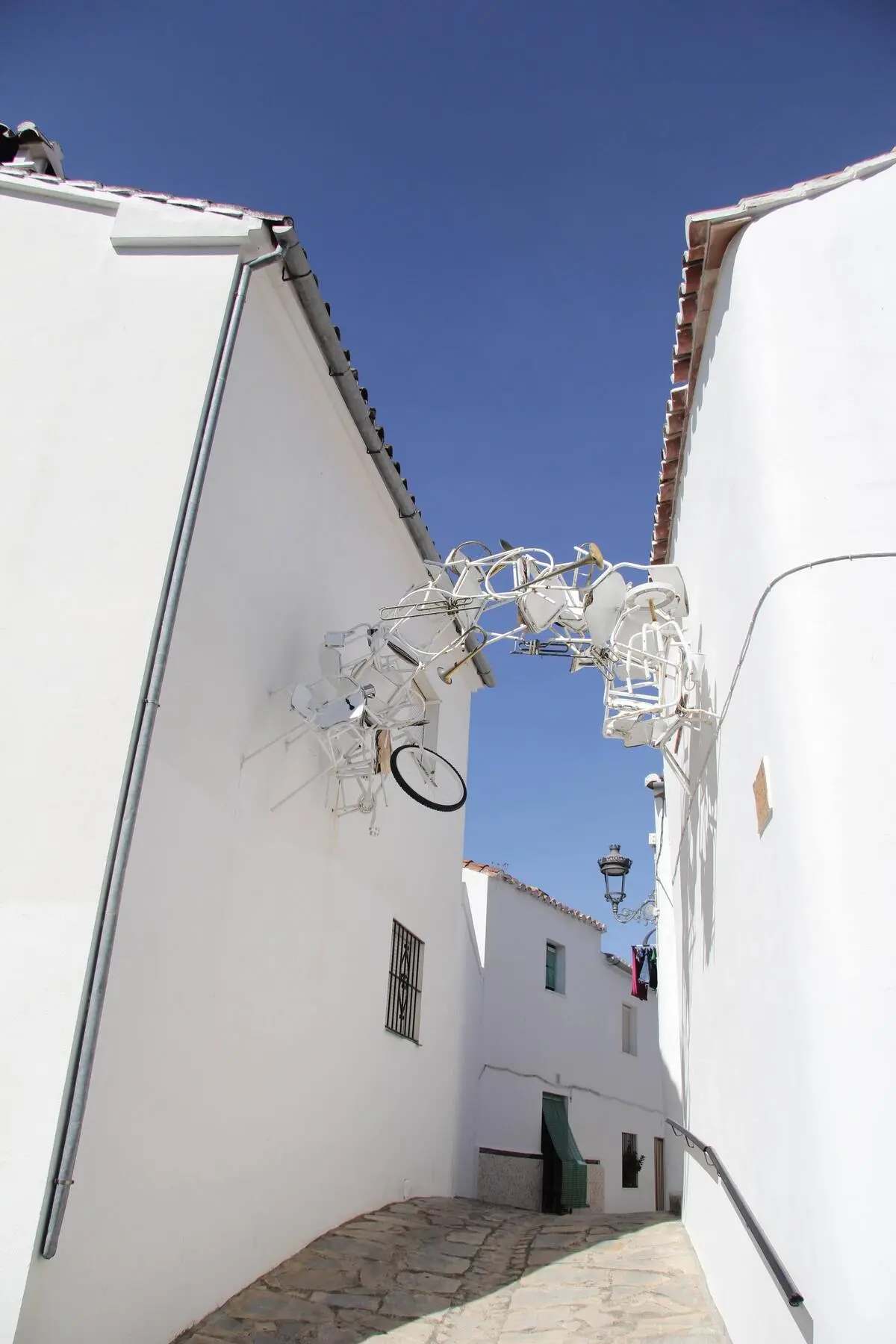
Nowadays the streets of this municipality are replete with art. This village has celebrated the ‘Encuentros de Arte’ art event since 1994, which has become its seal of identity. This event brings together international artists and is unique in the world, since the town council selects a series of projects by artists and funds an artistic residency in exchange for them leaving their works in the village.
In addition, Genalguacil boasts a museum of contemporary art (museo de arte contemporáneo) which houses most of the works that have historically been created in the village, since the works that are exhibited in the streets change each year.
Casares
At the foot of the mountain range (Serranía) and next to the sea, we find Casares, a village of narrow streets which is full of history. Blas Infante, the father of Andalusian nationalism (or Andalucismo) was born in this village. You can visit his birthplace here, but also other architectonic elements related to other cultures that have made their mark as they passed through the area, including Roman and Arab cultures.
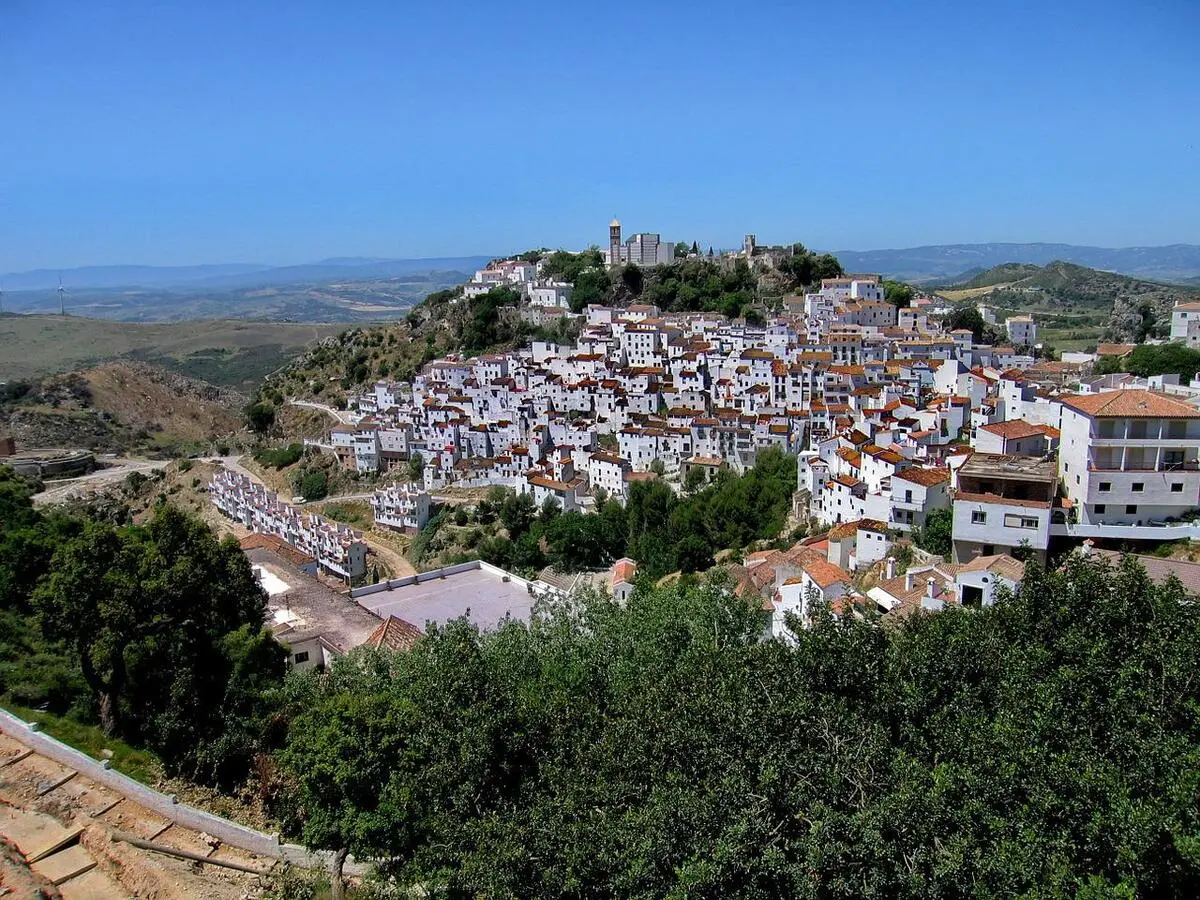
Hence, you can find the Hedionda Spa (balneario de La Hedionda), which was famous throughout Europe during Roman times since Julius Caesar said that he had been cured of a liver disease by bathing in its waters. There is also a perfectly preserved Roman bridge (puente romano) and various hermitages and Christian churches, as well as Moorish ruins that are still standing to this day. In addition, this village is very famous in Andalusia for its brown bread.
Malaga’s white villages in the Axarquía region
To the East of the province of Malaga is the region of Axarquía, extremely popular thanks to its growing of tropical fruits such as mango and avocado. This region is also home to some of Andalusia’s most famous white villages.
Frigiliana
Frigiliana is an essential stop along this tour of Malaga’s white villages. This village is one of the province’s most beautiful, known by locals as the balcony of the Mediterranean. Situated at the foothills of the Sierra de Almijara mountain range with sea views, it is just a few kilometres from Nerja. It is characterised for its narrow and steep cobbled streets with blue painted doors and decorated with colourful flowers.
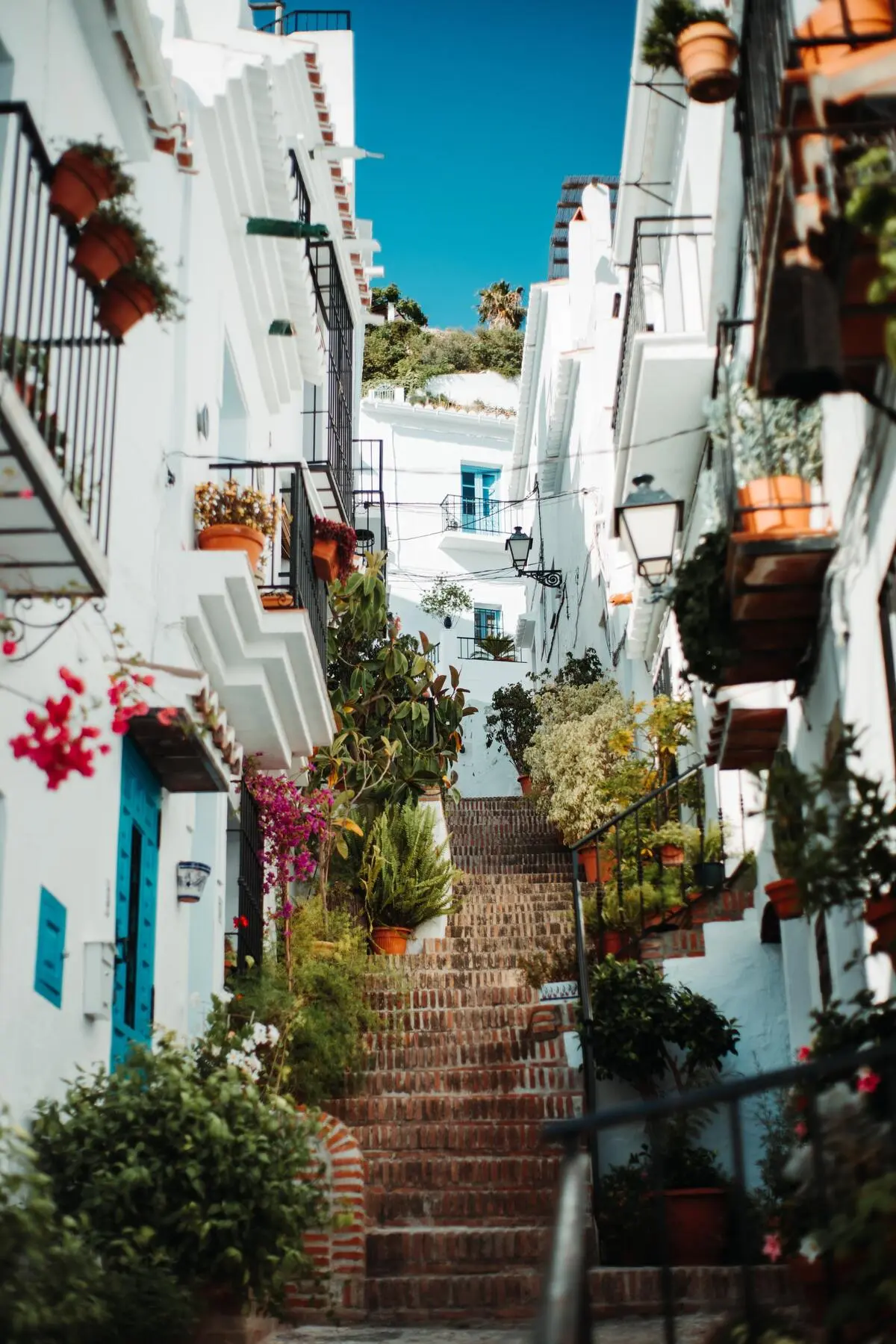
With all of these elements, this village is internationally renowned among tourists and its streets boast a Muslim heritage from where you can admire the sea at the foot of the mountain. In addition, Frigiliana has a rich culinary offer and visitors will find a plethora of typical products in its shops, including honey and unique ceramic pieces.
Nerja
If this village is famous for anything, it has to be the scenery where the popular Spanish TV series called “Verano Azul”, literally “Blue Summer” was filmed. Just seven kilometres from Frigiliana, Nerja is a gem of tourism, with well-known places of interest such as the Balcony of Europe (Balcón de Europa), a viewing point which offers the most incredible views next to the Mediterranean.
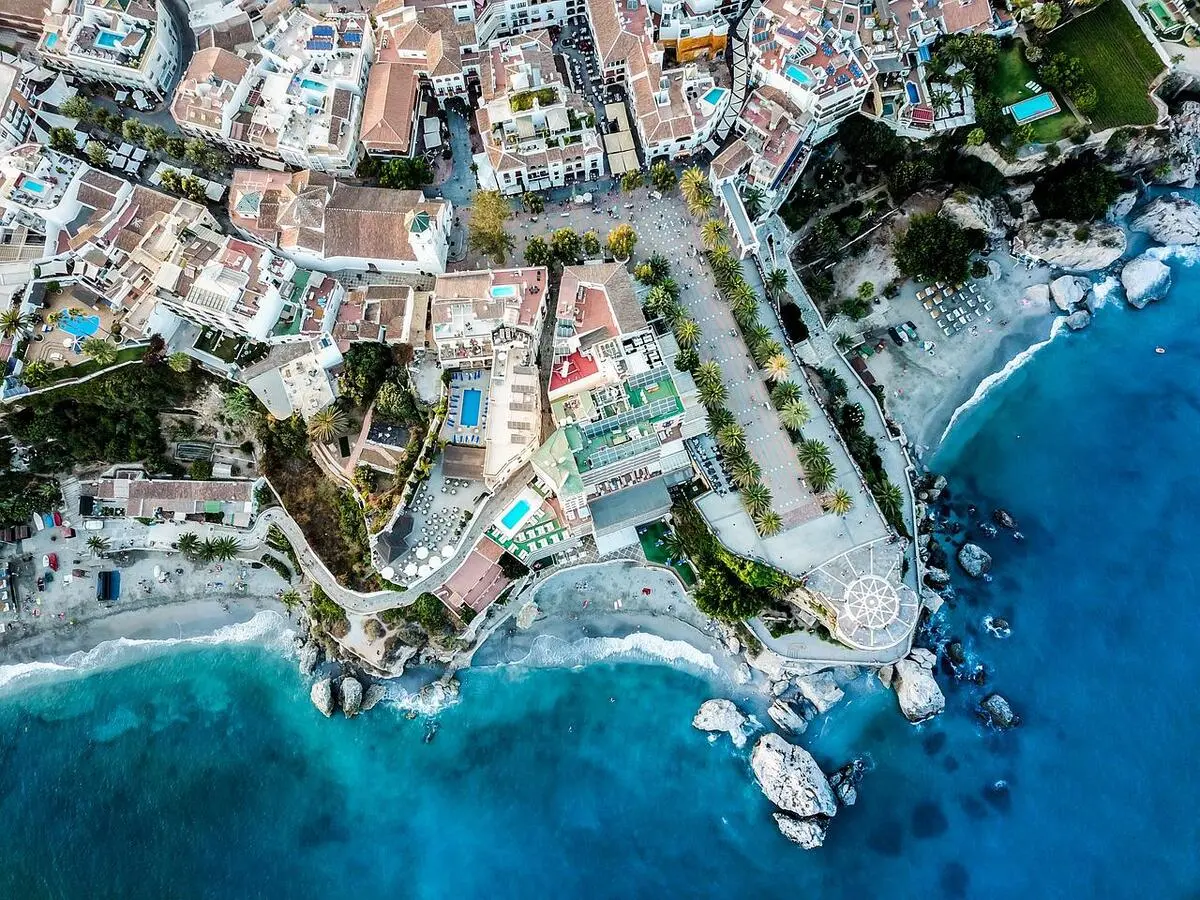
It also stands out for its caves by the sea, declared an asset of cultural interest since they were discovered. Taking up more than 35,000 square metres, these caves are spectacular and worth a visit to see their natural formations that stretch from floor to ceiling. For their part, the crystal clear beaches of this area are definitely its hallmark.
If there is one essential thing to do during the visit, it has to be eating out, since Nerja’s tapas are extremely popular, and so are the paella and fish dishes that you can enjoy at a beach bar (chiringuito) by the sea. Additionally, this white village is one of the best for the evenings, with a lively atmosphere and nightlife.
Torrox
Known as the village with the best climate in Europe thanks to its mild temperatures. Torrox is unique, since it is divided into two: Torrox Village (Pueblo) and Torrox Coast (Costa), two urban centres with a distance of 4km separating them, the first being situated in the mountain and the latter, by the sea.
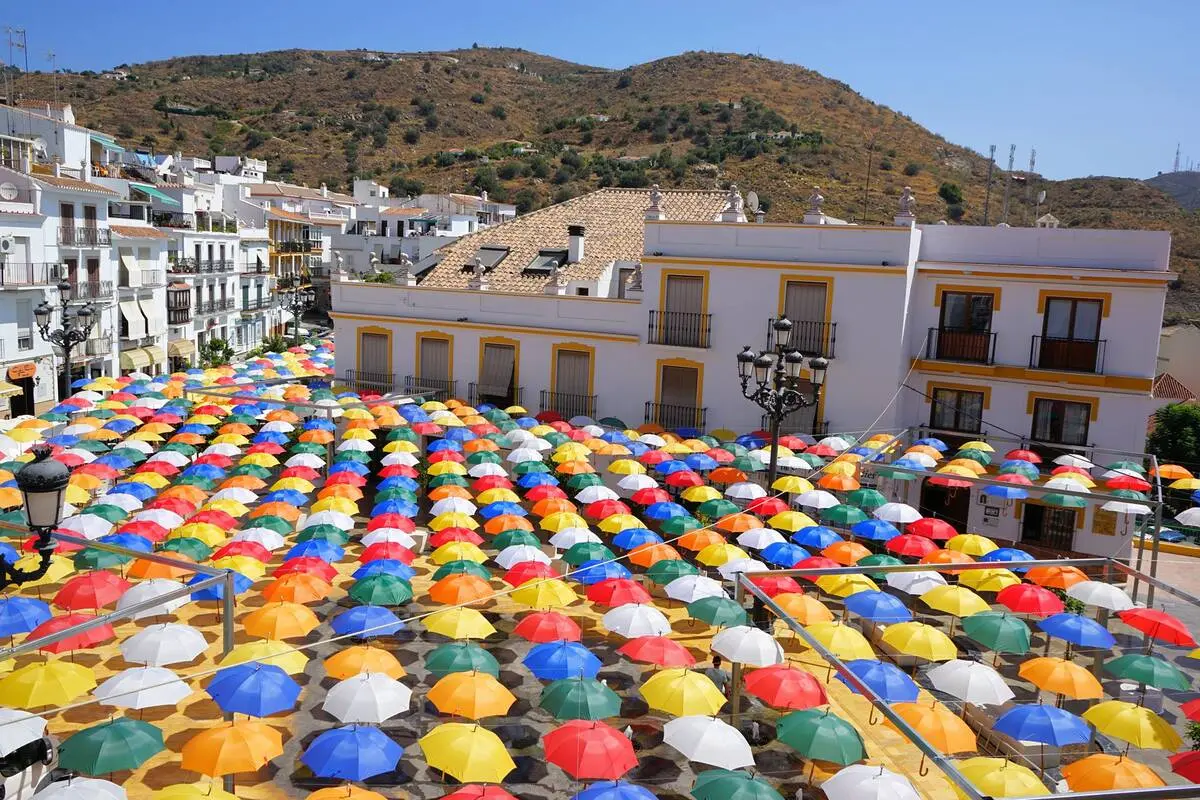
One of its most important buildings is its lighthouse, with a Roman archaeological site within it grounds, although it is also home to Torrox’s marine museum (Museo Marino de Torrox). You can find perfectly preserved Arab buildings scattered around its streets, such as the Calaceite Watch Tower (Torre Vigía de Calaceite) or the Huit beacon (almenara), although there are also the remains of an Arab fortress that once surrounded the village.
Another place that visitors should discover while they are in this white village of Malaga, is the Plaza de la Constitución. As well as being home to popular buildings such as Casa de la Hoya, the Town Hall (Ayuntamiento), or the Chorros Fountain (Fuente de los Chorros), in summer this square is also covered in more than 600 coloured umbrellas, offering visitors some unbeatable photo opportunities.
Cómpeta
Situated in the Sierra de Almijara mountain range, Cómpeta is a white village in the middle of the mountains which is famous for its winemaking tradition, specifically for its sweet wine made from moscatel grapes. The village’s Mudejar style church tower is prominent on this white postcard with its ochre tones which stand out above the houses.
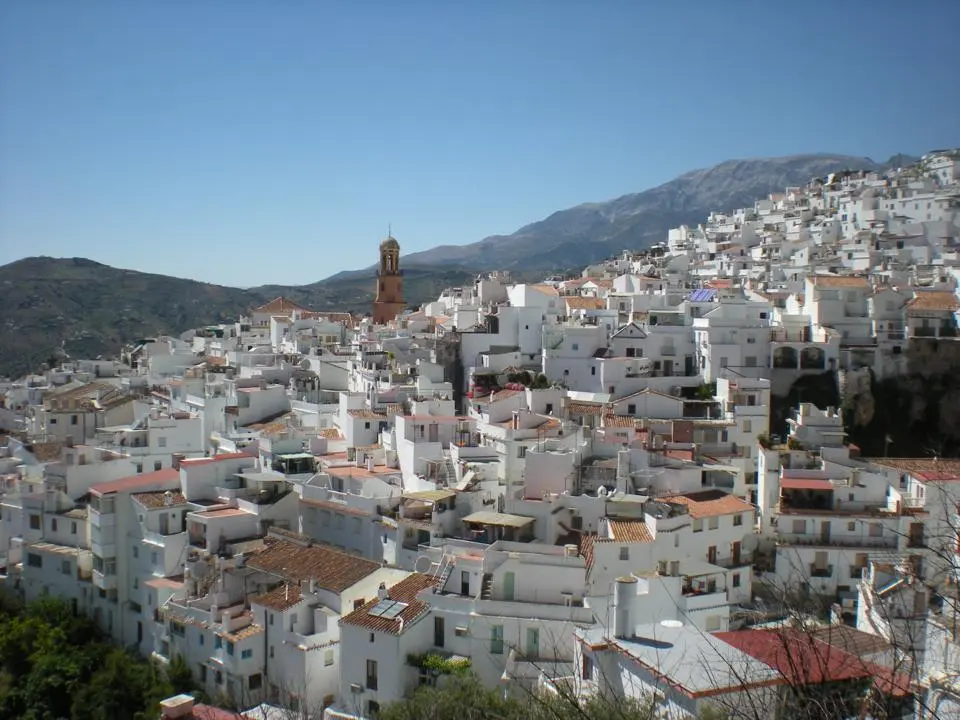
Among the things to visit, the Walk of the Traditions (Paseo de las Tradiciones) is definitely one which is well worth it. It is situated in Plaza Almijara next to the church and made up of a series of tile murals which depict the local customs of its inhabitants. Also worth a visit are the ‘hanging houses’ (casas colgantes) next to the river and panoramic lookout point. From here you can take some incredible photos of the village and the natural surroundings.
Map of Malaga’s white villages
On the map below, visitors that decide to take a tour through Malaga’s white villages by car will be able to see the itinerary to follow. However, it is advisable to visit the villages of Serranía de Ronda and the ones of Axarquía on two separate days, spending a minimum of 3-4 days to enjoy the trip.


